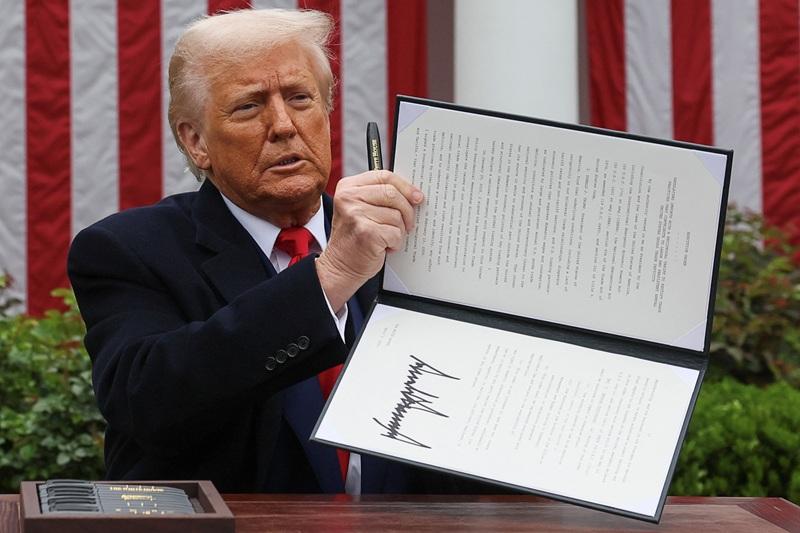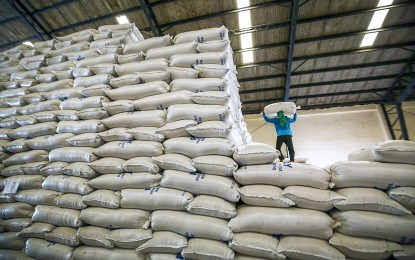Trump imposes a 17% tariff on Philippine exports to the U.S.
U.S. President Donald Trump has imposed a 17% tariff on Philippine exports, impacting trade relations and key industries. The move aims to address trade imbalances but raises concerns about economic repercussions for both countries.

In a move that has sent ripples through international trade circles, U.S. President Donald Trump announced a 17% tariff on Philippine exports to the United States, effective April 9, 2025. This decision is part of a broader "reciprocal tariff" strategy targeting over 100 countries, aiming to address what the Trump administration perceives as imbalanced trade relationships.
The Philippines, which currently imposes a 34% tariff on U.S. goods, finds itself among several Southeast Asian nations facing increased tariffs. For context, neighboring countries such as Indonesia and Malaysia are subject to tariffs of 32% and 24%, respectively.
President Trump, in his statement, emphasized the need for equitable trade practices, stating that the U.S. aims to rectify longstanding trade imbalances through these measures. He highlighted that the U.S. goods trade deficit with the Philippines reached $4.9 billion in 2024, marking a 21.8% increase from the previous year. Total goods trade between the two nations was approximately $23.5 billion in 2024, with U.S. exports to the Philippines at $9.3 billion and imports from the Philippines at $14.2 billion.
The Philippine government has expressed concern over the potential economic impact of the new tariffs. The United States is the Philippines' top export destination, accounting for 80.2% of its exports in 2024, valued at $58.7 billion. The electronics sector, a significant contributor to the Philippine economy, is anticipated to be particularly affected by the increased tariffs.
In response to the announcement, Philippine trade officials are reportedly exploring diplomatic channels to address the situation. There is hope that negotiations may lead to a reassessment of the imposed tariffs, considering the longstanding trade relationship between the two countries. However, as of now, no official statements have been released regarding any forthcoming discussions.
Economists warn that the tariffs could have a cascading effect on the Philippine economy, potentially leading to reduced export volumes, job losses in export-dependent industries, and a slowdown in economic growth. They also caution that consumers in the U.S. might face higher prices for goods imported from the Philippines as businesses pass on the increased costs.
The international community is closely monitoring the situation, as these tariffs could set a precedent for other trade relationships. Analysts note that while the U.S. seeks to address trade imbalances, such unilateral actions may lead to retaliatory measures from affected countries, potentially escalating into broader trade conflicts.
As the implementation date approaches, businesses on both sides are bracing for the impact. Philippine exporters are assessing strategies to mitigate potential losses, including exploring alternative markets and adjusting pricing structures. Meanwhile, U.S. importers of Philippine goods are evaluating the feasibility of continuing their current supply chains under the new tariff regime.
The coming weeks are critical as stakeholders await further developments. The effectiveness of diplomatic efforts, potential countermeasures by the Philippine government, and responses from the international trade community will significantly influence the future trajectory of U.S.-Philippine trade relations.
Sources:
- https://www.gmanetwork.com/news/money/economy/941507/trump-slaps-17-tariff-on-ph-exports-to-us/story/
- https://www.pna.gov.ph/articles/1247446
- https://www.philstar.com/business/2025/04/03/2433231/trump-slaps-17-tariff-philippine-exports
- https://www.manilatimes.net/2025/04/03/news/trump-slaps-17-tariff-on-philippine-exports/2085748
What's Your Reaction?












/https://tf-cmsv2-smithsonianmag-media.s3.amazonaws.com/filer_public/54/66/546650fa-26a4-40fd-8d6d-5a7a04540f81/rosetta2.png)
:max_bytes(150000):strip_icc():focal(999x0:1001x2)/robert-prevost-050825-1-39395418ab494da5a3a700c9478e66c8.jpg)















































format(webp))
format(webp))


























